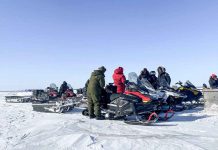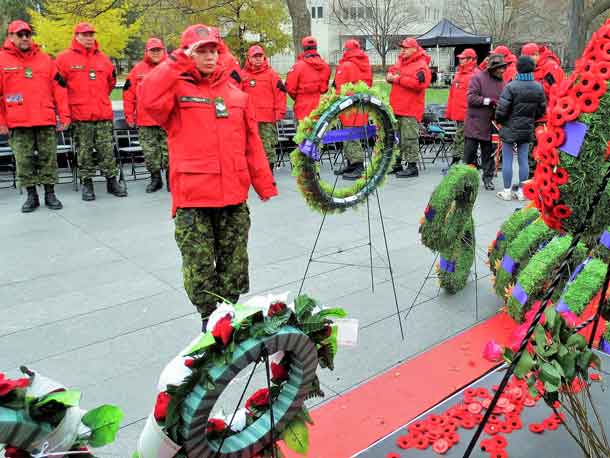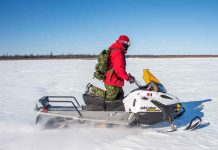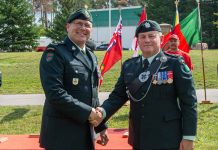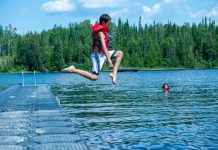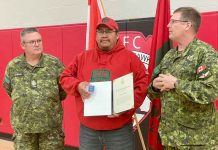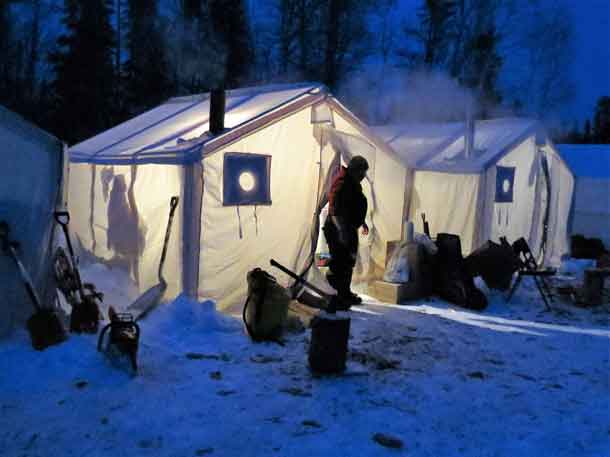
By Sgt. Peter Moon
THUNDER BAY – Canadian Rangers and other members of the Canadian Army have completed a major military exercise in the Far North of Ontario.
Severe cold, challenging snow conditions, and the logistics of the exercise were all challenges, said Captain Mark Rittwage, the Canadian Army officer commanding the Rangers of Northern Ontario.
“It was a great exercise,” he said. “We had 98 Canadian Rangers from 23 First Nations taking part as well as 28 other military personnel.”
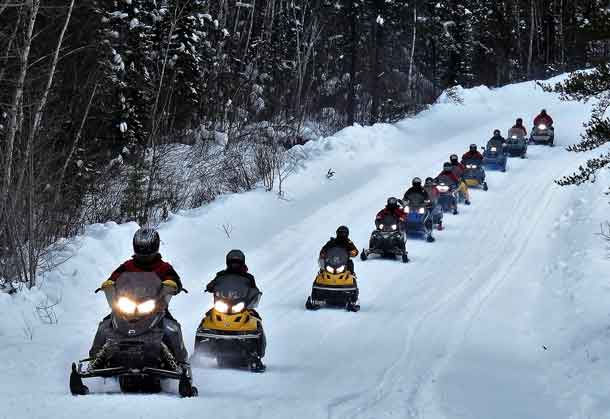
The exercise was conducted near the four First Nation communities of Attawapiskat on the James Bay coast; Bearskin Lake, 630 kilometers north of Thunder Bay; Nibinamik, 290 kilometers north of Thunder Bay; and Savant Lake on Ontario’s most northerly section of paved highway. It required Rangers to travel from their home communities to the exercise locations. Most travelled by snowmobile in challenging conditions.
The Rangers are part-time army reservists. In Northern Ontario, they conduct search and rescue missions, evacuations for forest fires and spring floods, and respond to a range of other emergencies in their remote and isolated communities.
One group of Rangers took almost 24 hours to travel non-stop from Wunnumin Lake and Kingfisher Lake to Nibinamik. “The snow was so deep they were breaking trail almost all the way,” Captain Rittwage said. “That’s exhausting work. They were going through more gas and oil than they expected and machines kept breaking down and had to be repaired.”
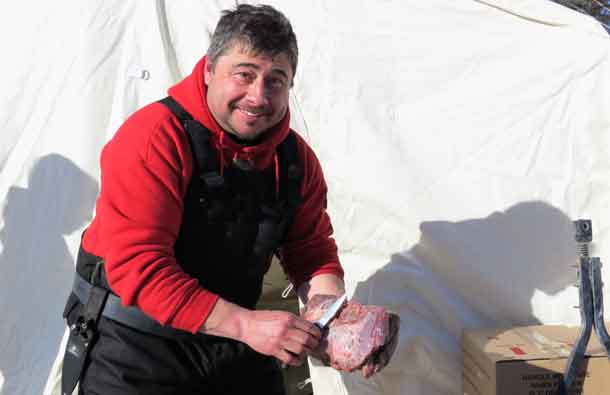
Another group took two days to snowmobile from Attawapiskat to Lake River in Polar Bear Provincial Park in near white-out conditions and in wind chills that dipped below -50C. Lake River, known in Cree as Lakitusaki, is a long-abandoned settlement. The former Hudson’s Bay Company trading post, church, and several residential buildings still stand on the site and Rangers took turns being photographed in front of them.
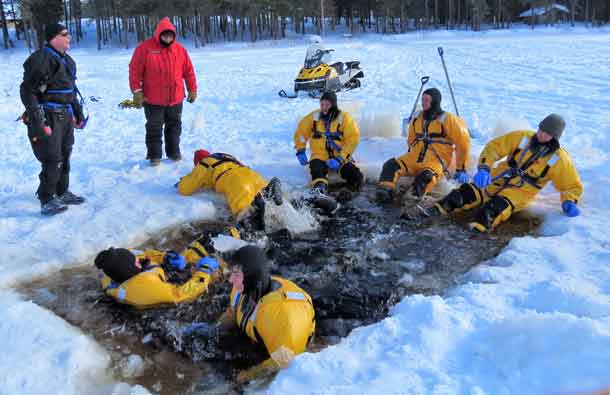
Once at their training sites the Rangers set up tent camps and conducted training that included ice water rescue, which involved wearing immersion suits and going into a large hole cut in the ice to learn rescue techniques.
“Logistically this was a very challenging exercise,” Captain Rittwage said. “The Rangers had to get from their homes to the four training locations along with all their equipment. A lot was learned from it. It was great training for ground search and rescue.”
Colonel Dwayne Hobbs, assistant chief of staff at the headquarters of 4th Canadian Division in Toronto, was impressed by what he saw of the Rangers at Savant Lake. It was the first time he had seen Rangers training on the land.
“It’s amazing to see the teamwork, their understanding of the terrain, the bush, the ice and snow conditions, and of the weather,” he said. “They’re at home, absolutely at home on the land. I’m thinking about frostbite and they’re thinking of what needs to be done next. They’re pragmatic about what they do. It’s not done in a rush but they do things in the right order and with a purpose. What I found fascinating was the amount of sharing of information. They were constantly helping each other.
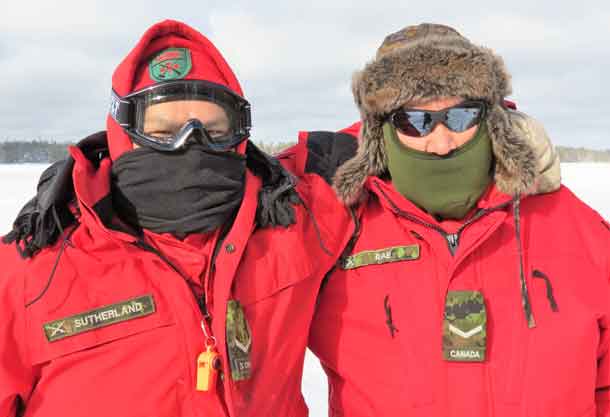
“There are a lot of negative stories about the North. But it’s not the full story. I’m here with a group of people who are engaged and empowered with all sorts of important skills. They carry themselves with such honesty and dignity. That’s what I want to take back with me down south when I talk about the Rangers.”
The exercise provided much-needed experience for many of the younger Rangers. The traditional knowledge of how to live on the land is fading, because more people are working and young people are more interested in electronic gadgets, said Sergeant Jean Rabbit-Waboose of Eabametoong First Nation.
“Being in a camp setting is nothing new to me,” she said, “I do it all the time and I love it. This training helps us teach other people and we can all learn from each other, from people from other communities. This is a good exercise.”
(Sergeant Peter Moon is the public affairs ranger for the 3rd Canadian Ranger Patrol Group at Canadian Forces Base Borden.)

